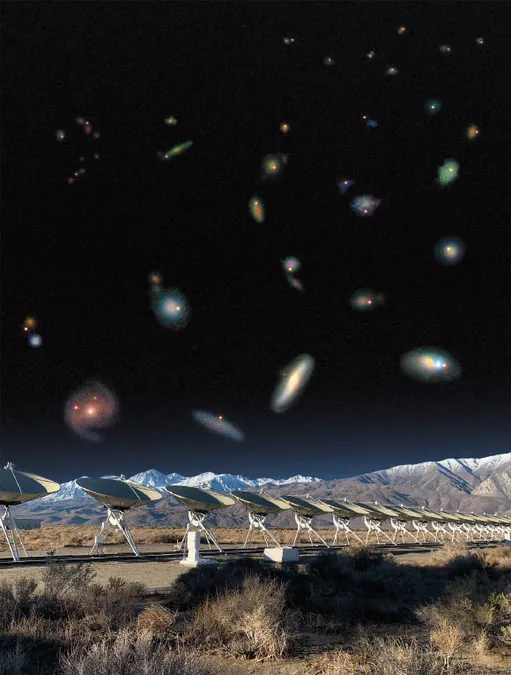
Shocking Discovery: Fast Radio Bursts Reveal Secrets of Massive Star-Forming Galaxies!
2024-11-06
Author: Wei Ling
Understanding Fast Radio Bursts (FRBs)
Fast Radio Bursts (FRBs) are ultra-brief but intense flashes of radio waves emanating from distant galaxies, each lasting just milliseconds. Researchers have now revealed that these enigmatic bursts predominantly originate from massive star-forming galaxies, shedding light on their mysterious nature.
The Connection Between FRBs and Magnetars
The link between FRBs and magnetars, a type of neutron star with extraordinarily powerful magnetic fields—up to 100 trillion times stronger than Earth's—has been a subject of fascination among astronomers. Notably, evidence from within our Milky Way has shown FRB-like bursts originating from a magnetar, marking a turning point in understanding these cosmic phenomena. Yet, the true processes leading to the production of FRBs continue to baffle scientists.
New Findings and Research Implications
New findings suggest that FRBs are not merely random occurrences in various galaxies; rather, they are predominantly spotted in massive star-forming galaxies. The groundbreaking study, led by Kritti Sharma, a graduate student at California Institute of Technology (Caltech), utilized the Deep Synoptic Array-110 (DSA-110) at Owens Valley Radio Observatory, which has successfully localized an impressive 70 FRBs to their specific galactic origins. This feat is significant, considering that only 23 FRBs have been identified by other telescopes.
The discovery challenges long-held beliefs that FRBs were uniformly distributed among all types of active galaxies. Researchers were astonished to find a higher frequency of FRBs in massive, metal-rich star-forming galaxies compared to their low-mass counterparts. This raises important questions about the environmental conditions that favor the birth of magnetars, the theorized progenitors of FRBs.
The Role of Metals in Magnetar Formation
As galaxies evolve, they accumulate heavier elements—metals produced by the death of stars. This process suggests that the conditions for magnetar formation might be more favorable in these heavy-element-rich environments. "Massive stars that supernova can become magnetars and are often part of binary star systems, where interactions lead to mergers," added Dr. Vikram Ravi from Caltech. The research revealed a staggering 84% of massive stars are binaries, and when one star in a pair swells due to increased metal content, it can draw material from its partner, leading to their eventual merger. This merger produces a star with a significantly enhanced magnetic field.
Future Research and Observations
The findings propose a compelling theory: the merged remnants of stars in environments rich in metals likely give rise to magnetars, which in turn generate FRBs. This connection implies that future observations of FRBs could unveil new insights into stellar evolution and the lifecycle of galaxies.
Looking Ahead with DSA-2000
Looking ahead, Sharma and her team are eager to harness the capabilities of DSA-110 to identify more FRBs and trace their origins. Furthermore, they anticipate the construction of the DSA-2000, an even larger radio array expected to amplify their discoveries by 2028. "Our progress is not just a win for the DSA-110 project but sets the stage for monumental strides in understanding the cosmos with DSA-2000," Dr. Ravi expressed enthusiastically.
Conclusion
Published today in the prestigious journal Nature, these findings mark a significant milestone in our quest to decode the enigmatic tapestry of the universe and the forces that shape it. Keep an eye on the skies, as scientists delve deeper into the phenomena of FRBs and the secrets they hold!




 Brasil (PT)
Brasil (PT)
 Canada (EN)
Canada (EN)
 Chile (ES)
Chile (ES)
 España (ES)
España (ES)
 France (FR)
France (FR)
 Hong Kong (EN)
Hong Kong (EN)
 Italia (IT)
Italia (IT)
 日本 (JA)
日本 (JA)
 Magyarország (HU)
Magyarország (HU)
 Norge (NO)
Norge (NO)
 Polska (PL)
Polska (PL)
 Schweiz (DE)
Schweiz (DE)
 Singapore (EN)
Singapore (EN)
 Sverige (SV)
Sverige (SV)
 Suomi (FI)
Suomi (FI)
 Türkiye (TR)
Türkiye (TR)